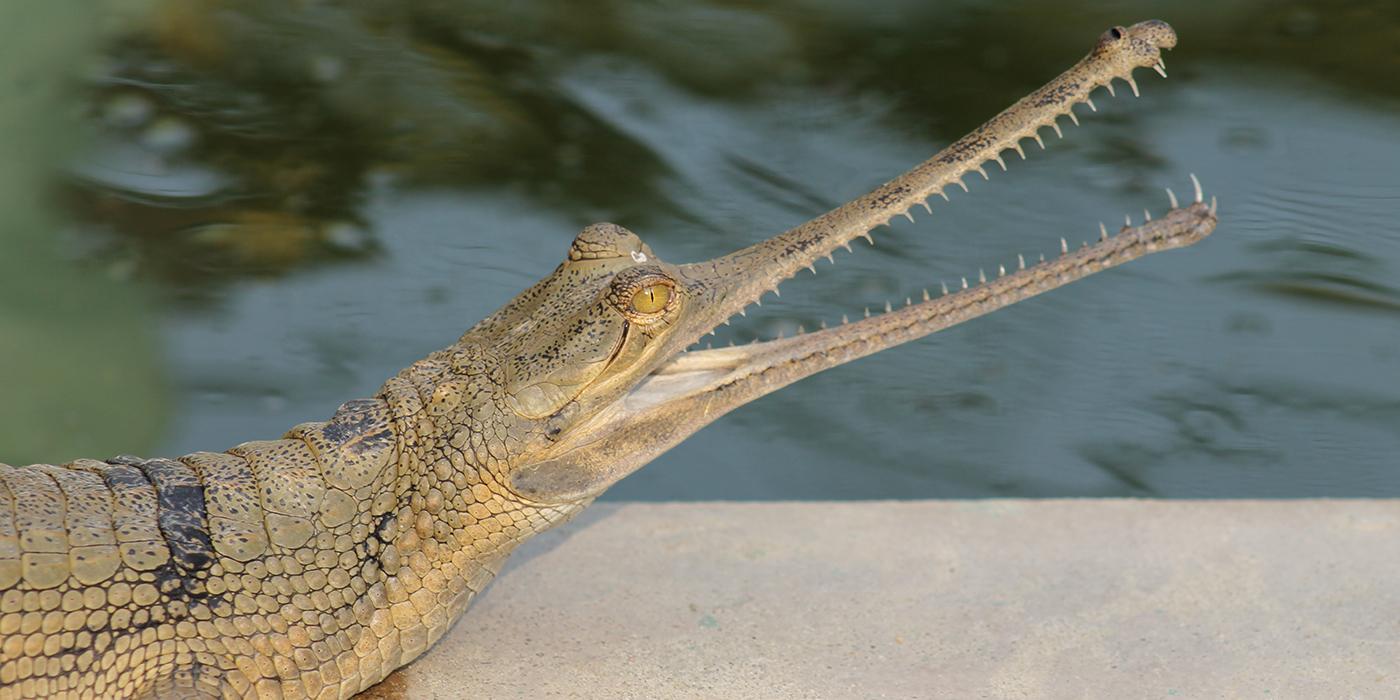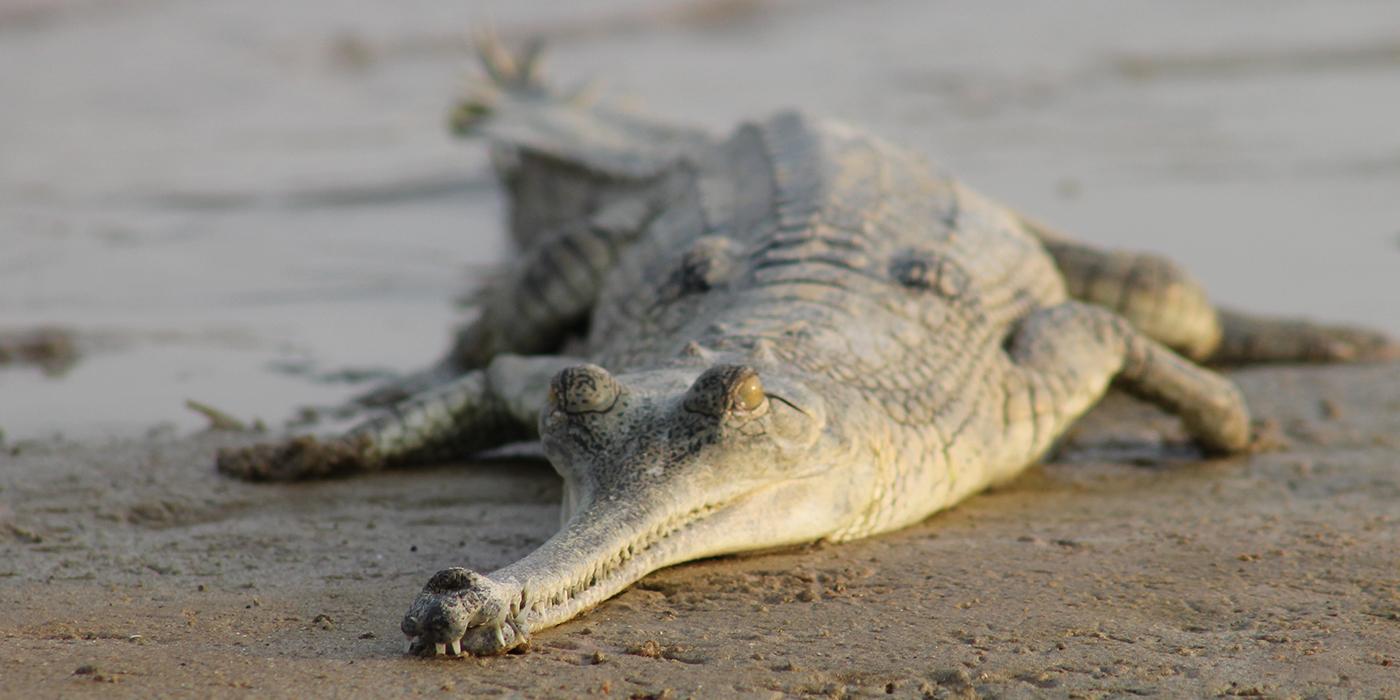Physical Description
The gharial is one of only two species in the Gavialidae family. It has a characteristic elongated, narrow snout, similar only to the tomistoma (previously called the false gharial). Many sharp, interlocking teeth line the gharial's elongated jaws.
Gharials exhibit sexual dimorphism — or differences in characteristics between males and females of the same species — in both size and appearance. Adult males develop a bulbous growth at the tip of their snout, called a "ghara" after the Indian pot it resembles. The ghara has several functions. It partially covers the crocodiles nostrils and acts as a vocal resonator, creating a loud, buzzing sound when the gharial vocalizes. It is also a visual signal for females, helping males attract a mate.
Because of their weak leg muscles, gharialsare poorly equipped for locomotion on land. Most of their movement takes place in the water. When they do move across land, gharials push their bodies forward across the ground, a motion known as belly-sliding.
Size
The gharial is one of the largest of all crocodilian species, with males reaching 16 to 20 feet (5 to 6 meters) in length. Females typically grow to lengths of 11.5 to 15 feet (3.5 to 4.5 meters).
Native Habitat
Historically, the gharial's range spanned rivers of Bangladesh, Bhutan, India, Myanmar, Nepal and Pakistan. Today, only fragmented populations remain in Nepan and northern India.
Gharials are adapted to an aquatic lifestyle in large rivers, and individuals typically only leave the water to bask and nest on sandbanks.
Food/Eating Habits
Adult gharials primarily eat fish, while juveniles also feed on insects, crustaceans and frogs. The crocodile's unique snout, along with its sharp, interlocking teeth help it capture prey, quickly striking at fish in the water. At the Smithsonian's National Zoo, gharials eat a variety of fish.
Reproduction and Development
Like other crocodilians, gharials are polygamous, with one male defending a territory where he and several females live. Territorial and courting display behaviors include head slapping the water and buzzing vocalizations. Females reach sexual maturity when they are approximately 9.8 feet (3 meters) in length, and males at about 13 feet (4 meters). Mating typically occurs in December and January.
Females dig a nest during the dry season, between March and April, and deposit an average of 40 eggs, which hatch from 60 to 80 days later. As with all crocodilians, the sex of the hatchlings is determined during incubation. Females, who are protective of their nest and hatchlings, provide the sole parental care.
Conservation Efforts
Gharials are one of the most critically threatened crocodilians. Their primary threats include habitat loss due to human encroachment, unsustainable fishing practices and hunting. The species came alarmingly close to extinction in the 1970s.
As human populations have expanded, damming and diversion of river for development and irrigation has drastically altered the gharial's habitat. Drought and fragmentation are especially detrimental to the species, because it cannot travel great distances across land to relocate. Unsustainable fishing practices within the gharial's shrinking river habitats causes a reduction in their food sources and increases human-wildlife conflict.
Gharial eggs are also collected for medicinal purposes, and males are hunted for their ghara, which is believed to have aphrodisiac properties. The government of India granted full protection to the species in the 1970s, in the hope of reducing poaching losses.
Conservation groups also began breeding and reintroduction programs in India and Nepal. Despite these efforts, the gharial population declined by 58 percent between 1997 and 2006. As a result, the primary conservation focus has shifted to the preservation of habitat and education of local people.
Help this Species
Practice ecotourism by being an advocate for the environment when you’re on vacation. During your travels, support, visit or volunteer with organizations that protect wildlife. Shop smart too! Avoid buying products made from animals, which could support poaching and the illegal wildlife trade.
Share the story of this animal with others. Simply raising awareness about this species can contribute to its overall protection.
Smithsonian's National Zoo and Conservation Biology Institute. (n.d.). Gharial. Retrieved December 28, 2025, from https://nationalzoo.si.edu/animals/gharial




